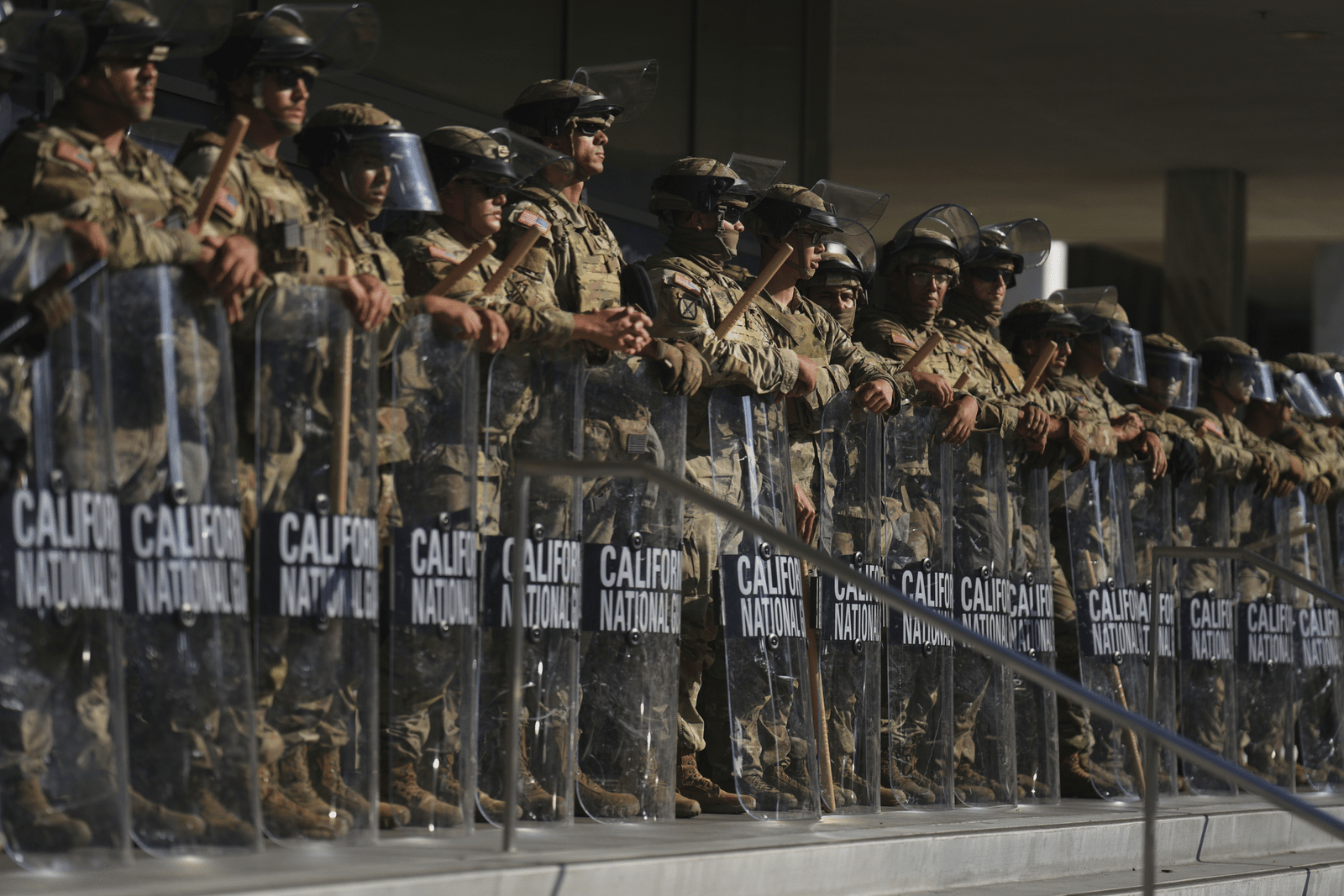More than 2,000 members of the National Guard have been officially released from duty following their deployment in the Los Angeles region in response to recent protests. The deployment, initiated after widespread demonstrations erupted across the city, aimed to support local law enforcement in maintaining public safety and preventing further unrest.
The protests, which started peacefully, were sparked by national outrage over incidents of police violence and systemic injustice. However, some gatherings later escalated into confrontations, prompting authorities to request additional support from the California National Guard. Troops were stationed at key government buildings, commercial districts, and transportation hubs to deter looting and violence.
Officials said the presence of the National Guard helped stabilize the situation in critical areas during the height of the unrest. “Their professionalism and rapid response played a crucial role in ensuring the safety of both protesters and the broader community,” a city spokesperson said.
With tensions easing and demonstrations returning to a more peaceful nature, city and state leaders determined that the continued presence of military personnel was no longer necessary. The drawdown began over the weekend and was completed earlier this week.
As Guard members return to their home units, city officials continue to work with community leaders to promote dialogue, address the concerns raised during the protests, and implement meaningful reform in law enforcement practices.
This decision marks a significant step toward normalcy for the Los Angeles area, though the conversations sparked by the protests are far from over.
2,000 National Guard Troops Withdrawn from Los Angeles Following Immigration Protest Deployment
Chief Pentagon spokesperson Sean Parnell confirmed the decision in a statement, crediting the drawdown to what he called improved conditions in the region.
The move follows a month-long deployment that began on June 7, when the Trump administration sent the first wave of 2,000 troops to Southern California. Days later, another 2,000 troops were dispatched. Although the total number of Guard members sent to the area has fluctuated, the deployment has remained in place for over a month. Precise numbers regarding additional arrivals or early departures during that time remain unclear.

The deployment was launched in response to escalating protests in Los Angeles County following increased immigration enforcement actions by U.S. Immigration and Customs Enforcement (ICE) and the Department of Homeland Security (DHS). Demonstrators gathered across the city, particularly in downtown areas where federal agents were increasingly visible. Tensions mounted as protesters decried what they viewed as heavy-handed tactics by the federal government.
California Governor Gavin Newsom reacted strongly to Tuesday’s announcement, renewing his calls for a full withdrawal. “For more than a month, the National Guard has been pulled away from their families, communities and civilian work to serve as political pawns for the President in Los Angeles,” Newsom said in a statement.
Los Angeles Mayor Karen Bass also welcomed the partial withdrawal, calling it a victory for local residents. “This retreat happened because the people of Los Angeles stood united and stood strong,” Bass said during a press conference.
Bass further expressed her hope that the current reduction would pave the way for a full exit of federal forces from the region. “Let this be the beginning of the end of military occupation in our streets,” she added.
Despite the drop in National Guard numbers, immigration enforcement operations have continued throughout Southern California. Just last week, federal agents conducted two aggressive raids at legal marijuana farms, arresting over 300 migrants. The raids turned chaotic, leading to one confirmed death and multiple injuries.
The legality of these enforcement operations is also under intense scrutiny. On Friday, a federal judge ruled that the Department of Homeland Security had been conducting stops and arrests in Los Angeles without probable cause. This ruling followed a lawsuit filed by the ACLU of Southern California, which alleged that federal officers had violated constitutional rights and denied detainees access to legal counsel.
In response to the court’s decision, Mayor Bass issued guidance to all city employees, instructing them to require proper arrest warrants before granting federal agents access to public facilities. She also ordered city departments to begin preparing for possible future enforcement scenarios.
Advocacy groups are still calling for more transparency, oversight, and an end to what they describe as “militarized immigration policy.”
While the release of 2,000 troops marks a significant shift in federal response, both city and state leaders remain firm in their opposition to what they view as politically motivated military deployments within U.S. communities.
